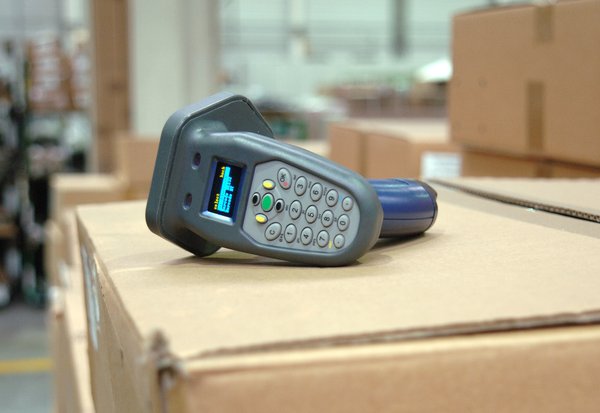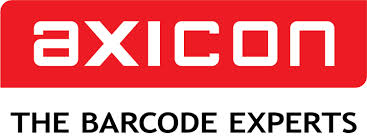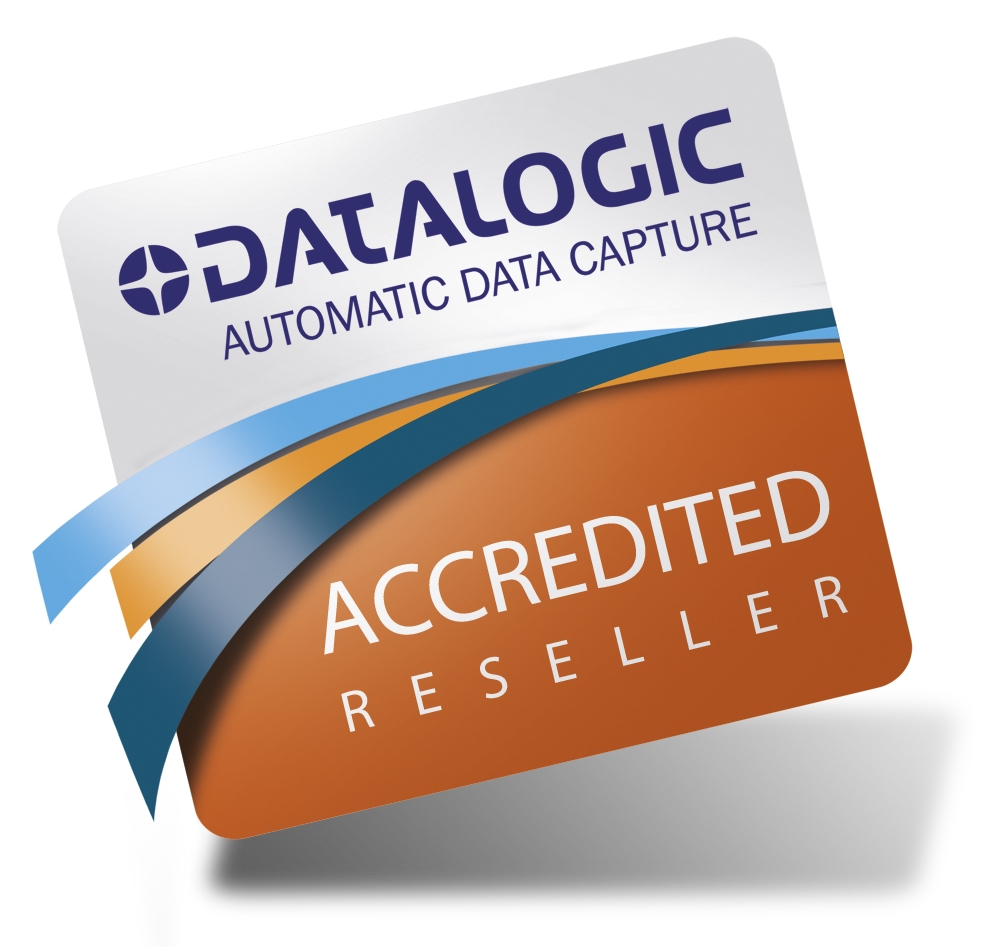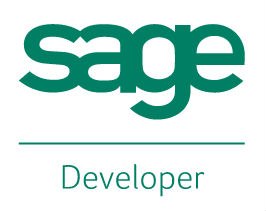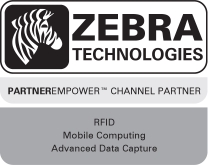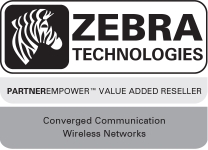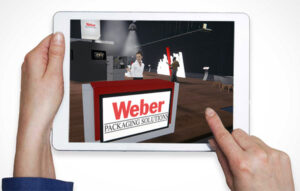Portable Print & Ship
The Barcode Reader – efficiency in the form of a device
The “Portable Print & Ship” solution utilises a new kind of small handheld reader. The device can scan barcodes and it also contains a read/write unit for tags.
Barcode content is automatically converted into an EPC (Electronic Product Code) and the data is immediately written to a tag, without a printing unit being required. “Handy Tags” ensure the process is both rapid and uncomplicated. In order to ensure satisfactory performance in later processing, even when using on metal surfaces and products containing liquids, “Handy Flag Tags” are available, equipped with a special backing paper. No additional equipment is necessary: the label can later be simply folded by hand so that the portion containing the RFID tag is raised slightly above the surface. This significantly improves the read performance.
Easy transmission of product details
The innovative RFID technology facilitates the process of identifying products and acquires all the necessary information regarding the different products. Even with difficult ‘external’ conditions including metallic surfaces, the chip-based system allows for an easy transmission of product details. The ‘main piece’ of this technology consists of a transponder – a chip which stores the data, also known as the Electronic Product Code (EPC).
This code and all the included information can then be read by barcode readers. Today these handy devices are no longer simply readers, but are now also multifunctional with the capability to write new tags. With these practical readers it is just as easy to scan barcodes and write or read tags as it is to print new ones at the same time. Here, the device makes work processes easier and improves time efficiency. In comparison to only a few years ago when everything had to be registered, counted or read manually, the new generation of readers, together with technologies like RFID, have really made logistical processes a lot simpler.
How does it work?
The former original barcode system is being gradually complemented by this new technology. Regardless, the Weber Barcode Reader is designed and able to manage both of these systems. This device is fully equipped for both barcode reading and the new RFID technology.
When the barcode is read it directly transforms this information into an EPC. If required, the obtained data can then be instantly printed onto a tag. The practical Barcode Reader substitutes an additional printer when tags are needed immediately. Just one device combines all functions which are necessary for efficient work processes in logistical and similar businesses, even though a professional bar code label printer is typically recommended for the general printing of labels and tags.
Special features of the barcode reader
In addition to the already mentioned functions of the reader, there is a feature which can be used to manage more ‘extreme’ cases. ‘Handy Tags’ ensure that a smooth workflow is guaranteed in all circumstances. Products containing liquids or with metal surfaces are sometimes difficult to deal with in terms of reading their information or writing a useful tag for them. Such difficulties can be eased by using the ‘Handy Flag Tags’ – tags made from a special paper.
This label or tag can also be made bolder allowing for improved legibility. Due to the special bolding, a little distance is created between the product surface and the part of the tag which includes the RFID-encoded information. The information can then be read without being negatively affected by the surface. With the barcode reader no other devices or equipment are necessary – it is all included in one reader.
Adobe Reader is required to open and view PDF files. This can be downloaded free from adobe.com.
Available Documents
Markoprint Shutter Printhead HP
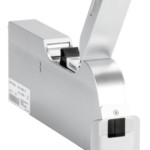
Inkjet nozzles can clog and dry up in a dusty printing environment, which is typical in wood-processing enterprises and other sectors. This results in poorly printed images. Our Markoprint Shutter Printhead HP prevents dust from entering the ink cartridge or gathering on the nozzles. During a production halt, the printhead automatically retracts the cartridge and shuts the open nozzle plate. After being paused for even several days, it is instantly ready to print again.
View ProductMarkoprint Integra PP RAZR
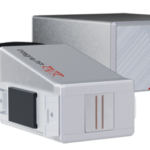
Experience Effortless High-Resolution Printing: Introducing the Integra PP RAZR with Cutting-Edge Technology. Print Up to 34mm High on Virtually Any Product Surface with Ease. Be Amazed by the Permanent Print Head’s Impressive Resolution, Lightning-Fast Speed, and Integrated Redundancy. Plus, its Compact Design Ensures Seamless Placement in Any Production Facility.
View ProductX1Jet HP Premium MK2
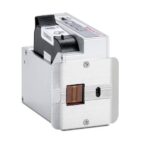
The innovative Markoprint X1JET HP inkjet printer codes absorbent and semi-absorbent surfaces quickly, accurately and reliably. It is designed for a different range of applications in the food and beverage industry as well as the chemical and pharmaceutical industry. The controller and printer are combined in one single unit, making the system extremely compact.
View ProductMarkoprint NonStop Printing
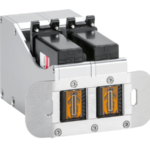
To enable continuous marking in ongoing production, our Markoprint NonStopPrinting printhead holds two alternately printing cartridges. Because the other ink cartridge is printing on the same position, each ink cartridge can be changed, cleaned, or serviced without pausing the machine.
An intelligent automatism prevents both cartridges from going empty at the same time. The first cartridge will always print two consecutive print jobs, taking turns with the second cartridge, which will only print one. This sophisticated automatism avoids both cartridges from running out at the same time. This will keep the ink from drying out in both cartridges. When the cartridge with the larger print volumes is empty, a warning will show, and the other cartridge will continue printing until it is replaced. The new cartridge will print the lower quantities to allow for you to replace the “older” cartridge. A sophisticated workflow that will boost your efficiency and productivity.
View Product

